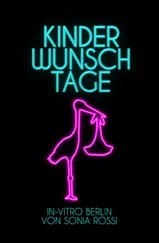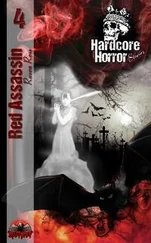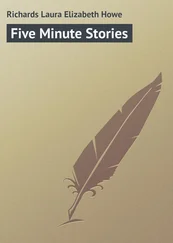“Whatchutalkin’boutWilliswhatchutalkin’boutWillis—”
I have only a little strength left. But it’s enough to rise up and sink my teeth into the monster’s flesh.
Friday
12:30 p.m.
“Words can’t express how sorry I am. Safety is our top priority — I’m as appalled as you are that something like this could occur at our school.”
“He had to get three stitches! The plastic surgeons say that the scar could be visible for months!”
I roll my eyes as Simon’s mother starts to cry.
“He’s just a little boy,” she says. “And you let him be exposed to wild animals!”
I glance at my sons. They’re still alive, but their breathing is shallow and erratic. Our cage has been moved to the principal’s office, yet they don’t seem aware of the change in our surroundings. “I’m considering pressing charges,” Simon’s mother prattles on. “My lawyer says I have a real case. Simon had to take a rabies test, and when the nurse pricked his thumb, he cried and cried. The doctor said he’d never seen a boy cry like that.”
I smile proudly, thinking of this scene.
“He’s going to need therapy,” the woman continues. “Lots of it.”
“Is there anything I can do,” asks the tired principal, “to help regain your family’s trust?”
Simon’s mother turns toward our cage, her eyes narrowing.
“I want those animals out of the classroom.”
Principal Davenport nods. “We’ll move them to homeroom 2R.”
“That’s not enough,” she says, her voice lowering. “I want them destroyed. ”
Principal Davenport clears his throat.
“Of course,” he says.
He picks up a phone and calls for Carlos, who arrives within seconds, mop in hand.
“Hola!” the principal says. “Listen. I… uh… need you to take care of something.”
I can smell the Dumpster before I see it, an overflowing bin of putrid trash. My nose begins to twitch as I process all the stenches: decomposing Dunkaroos and mold-encrusted Pop-Tarts; rancid, soggy Lunchables and spoiled Nestlé Quik. The monsters have accumulated so much waste this week, and now we’re to be added to the pile.
“Sorry, little guys,” Carlos says.
He scans the alley to make sure no children are watching. Then he pulls a hammer from his tool belt. I lick my children’s faces one last time. I know my act of rebellion has hastened their deaths. But my guilt is assuaged by the knowledge that their suffering will soon be at an end.
Carlos holds the hammer over Mr. T’s tiny skull. My son looks up, his eyes half lidded. I pray that he doesn’t grasp the situation, that his final moments aren’t consumed by fear.
“Sorry, little guys,” Carlos says again. “Sorry.”
He raises the hammer high, and his sleeve slides down his forearm, exposing his tattoo. He stares at the three cursive names. Then he puts away his weapon, grabs our cage, and runs.
Saturday
11 a.m.
I awake to the sight of three girl humans, gobbling pancakes and chatting rapidly.
“What do we name the babies?”
“Snap, Crackle, and Pop!”
“The mommy should be Mrs. Fluffy or Mrs. Furry or—”
“It’s not a mommy,” Carlos interrupts. “It’s a daddy.”
He pours some Cheerios into our cage.
“And we’re going to call him Hercules.”
All the girls laugh.
“Hercules!”
“Why?”
Carlos crouches down and looks into my eyes.
“Because he’s tough. And strong. And he works long hours, even though it’s a living nightmare.”
His daughters look at one another nervously.
“Okay,” whispers the eldest. “We’ll call him Hercules.”
Carlos clears his throat and wipes his eyes roughly with his sleeve.
“Good,” he says. “Thanks. Now finish your breakfasts, every last bite. I mean it.”
When the nurses handed me my son, I couldn’t believe how perfect he was. Ben was so robust, nearly fifty inches tall, including horns and tail. Even the doula was impressed.
“My God,” she said. “My holy God in heaven.”
Alan and I knew instantly that our child was exceptional. He was just so adorable, with his pentagram birthmark and little, grasping claws. His red eyes gleamed with intelligence. When the doctors came in with all their charts, they just confirmed what we already knew. Our child was “one of a kind” and “unlike any creature born of man.”
Alan and I were ecstatic — but also a little bit nervous. Raising a gifted child is a huge responsibility. And we were determined not to squander Ben’s talents. We vowed then and there that we would do all we could to ensure he achieved his full potential.
The first step was getting him into the right preschool. We figured it would be a breeze, given Ben’s obvious star quality. But, to our great surprise, he struggled with the interview requirement. At Trevor Day, a teacher asked him how old he was. Instead of saying “three,” he gored open her stomach and then pinned her to the ceiling with his mind. We were able to get him an interview at Trinity, thanks to a family connection. But when Ben saw the crucifix in the lobby, his eyes turned black and the walls wept blood. Why was Ben behaving this way? There was only one logical explanation: attention deficit disorder. We took him to a specialist on Park Avenue, and within five minutes our son had his first prescription for Ritalin.
At first Ben wouldn’t take his pills. Padma, our nanny, had to chase him for hours around the apartment, blowing incense in the air to try to scare him down from the ceiling. Sometimes we had no choice but to crush up the pills and slip them into his ram’s blood. Within months, though, Ben got used to his medication. He became calmer, more alert, and far less murderous. He was a real joy to be around.
In some ways, Ben still lagged behind most children. He spoke only one word: arrgh. And he was unable to tie his shoes or blink his eyes. We didn’t care, though. Because, by the age of five, he’d finally found an outlet for his gifts. Art!
Ben always had a creative temperament. He could grip crayons by his second birthday (which is very rare), and by the age of six he was drawing every day. His favorite colors were black and red. Sometimes, while composing a sketch, he would become so excited that his crayon would break apart in his claws and he would start to ram his horns against the wall as noxious steam emitted from his ears. If Ben’s art supplies were taken from him, he would respond with so much violence that Padma would have to subdue him, using one of the sleeper holds she’d learned. It didn’t take long for Alan and me to realize we had a true artiste on our hands.
One time, my friend Carolyn — whose daughter, Esther, is Ben’s age — came over to our apartment for tea. When I showed her Ben’s drawings, she was so impressed, her face turned pale. Her daughter was still doodling fluffy clouds and rainbows, and here was Ben, already sketching three-dimensional bone altars. Carolyn would never admit it, but I could tell she was a teensy bit jealous.
We decided to enroll Ben at Dalton, because of its emphasis on creativity. I wasn’t going to let Ben’s talent go to waste at some cookie-cutter public school where every child is forced into the same dull mold. I wanted him to have a chance to find himself.
The truth is, both Alan and I had secretly hoped that our child would be a “creative.” We each harbored artistic dreams in our youth (Alan wrote poetry and I made collages). Our parents, though, discouraged us from pursuing “les arts.” In their opinion, it was just too financially risky. I’m thrilled that I ended up at Synergy Unlimited, and Alan loves his job at the Globex Corporation. But even though we’ve made successful careers in business, there’s still a part of us that wonders, What if? With Ben (who’s five times more talented than Alan and I ever were!) we finally had the chance to answer that question.
Читать дальше












